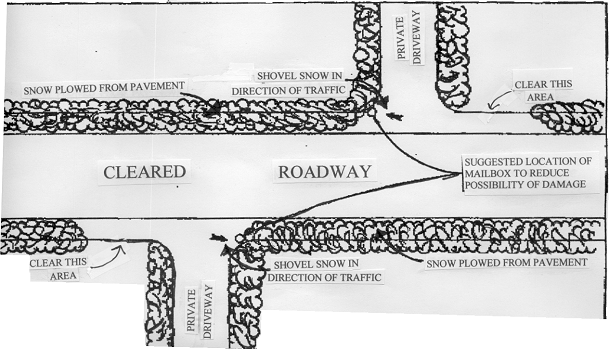Winter Suggestions
Many times this winter our Public Works Department will be called upon to clear the Town's roads of snow. Each time the job will be equal to plowing snow from a two-lane highway stretching across the country from Maine to California, plus an additional two or three hundred miles. During each storm we plan to keep our equipment in continuous operation.
Just as certain as the storm is the certainty that we will displease some property owners because we will be plowing their already cleared driveways full of snow again. Actually, we wish we could leave each driveway meticulously clear, but to do this would mean that we could never finish the plowing in a reasonable time.
During a storm our plow drivers must keep the pavement, or traveled right-of-way, cleared. After the storm and after the pavement has been cleared, the Publicworks Department must “widen-out” and clear the shoulder. During this widening phase is when the driveway conflict appears and the plow fills the opening in your driveway that you have just cleared. We recognize this is discouraging and irritating, but with your cooperation and the instructions below this inconvenience can be minimized.
Below you will find a sketch showing how your driveway can be initially cleared to help reduce the possibility that after the plow passes, you will be snow bound again. We suggest that you clear your driveway in the manner suggested in the sketch, by shoveling snow in the direction of traffic and also make a pocket next to your driveway as shown, snow accumulation on the plow will drop into that pocket and only a bare minimum will go into the driveway opening.
Broken mailbox posts are another source of conflict. Although our plow drivers try to take extra precautions not to hit these posts, experience has shown that with reduced visibility during a storm it is not always possible for the driver to see the post in time to avoid striking it with the wing of the plow. Any installation of this nature (that is within the right-of-way of the State Highway) is placed there at the owner’s risk. The State does not assume the responsibility of replacing broken posts. Owners should see that the posts are placed at a maximum distance of 5 feet or more from the roadway pavement.



